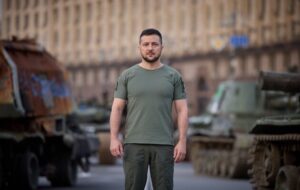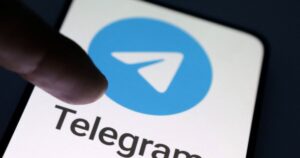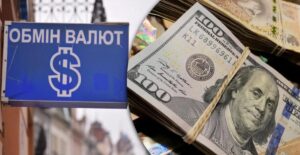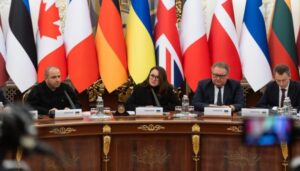
Ukrainian President Volodymyr Zelensky held interviews with candidates for the posts of regional administration heads on Sunday, he wrote on his Telegram channel.
“The conversations were thorough. I am grateful to everyone who is ready to take responsibility for the situation in the region and serve our state and people. Appointments will be made in the near future for the Vinnytsia, Dnipropetrovsk, Poltava, Ternopil, and Chernivtsi regions. I would like to thank the leaders who have served in these positions. The names of the new leaders will be announced after the formal procedures for preparing the appointments are completed,” the president said.
He noted that the key task of the leaders will be to strengthen local self-government, community resilience, and the ability of regions to protect lives and help communities in need. “Each of our regions, all our cities and communities must stand shoulder to shoulder in defending all of Ukraine,” Zelensky added.

The majority of Ukrainians (62%) named the social network Telegram as their source of news and information, according to the results of a survey conducted by the international research company Ipsos on November 14-28, 2025, the results of which are available to the Interfax-Ukraine agency.
Specifically, 84% of Ukrainians aged 18-24 named Telegram as their source of news and information, 87% of those aged 25-34, 79% of those aged 35-44, and 74% of those aged 45-54. However, among those aged 55-64, 51% of respondents get their information from Telegram, and among those over 65, only 30%.
Less than half of those surveyed named all other sources.
In second place is television, from which 49% of respondents get their news and information, with the majority of them belonging to the two older age groups (54% aged 55-64 and 76% aged 65 and older). However, only 23% of young people aged 18-24 get information and news from television, compared to 32% of those aged 25-34, 36% of those aged 35-44, and 43% of those aged 45-54.
YouTube ranks third: 46% of respondents get news and information from this source, with almost equal representation across all age groups (from 41% among those over 65 to 53% among those aged 45-54).
This is followed by personal communication, which was mentioned by 38% of respondents, also relatively evenly across all age groups (from 33% among those over 65 to 45% among those aged 25-34).
The social network Facebook is in fifth place, cited by 34% of respondents (from 26% among those over 65 to 43% among those aged 45–54).
TikTok was named as a source of news and information by 23% of respondents, with more than 30% among those under 35 and only 16-17% among those over 54. The situation is similar with social network X, which was named as a source of news and information by 6% of respondents — 13% among those under 25 and only 3% among those over 65.
Radio was named as a source of news and information by 18% of respondents, but only 8% of them were under 25 and 25% were over 65. The situation is similar with the press: it remains a source of news and information for 11% of respondents, but only 7% of them were younger than 25 and 14% were older than 65.
40% of respondents said they would trust personal communication as a source of information about potential candidates if it were announced in Ukraine, 38% said they would trust the social network Telegram, 35% trusted YouTube, 28% trusted television, 26% trusted Facebook, 18% trusted radio, 17% trusted the press and TikTok, 10% trusted social network X, and 57% trusted other sources.
At the same time, 29% of respondents do not trust television as a source of information about candidates, 26% do not trust TikTok, 24% do not trust the press, 22% do not trust radio, 20% do not trust Facebook, and 18% do not trust social network X. 14% of respondents do not trust personal communication and social network Telegram, 13% do not trust YouTube, and 11% do not trust other sources.
During the study, 2,000 respondents aged 18 and older were surveyed in all government-controlled regions of Ukraine, including 1,500 through personal interviews (CAPI) and 500 by telephone (RDD CATI). Quotas were not applied during data collection in order to preserve the probabilistic nature of the sample. The sampling error does not exceed 2.2% with a 95% confidence level.

Colombia, with the support of Russia and China, has initiated a meeting of the UN Security Council, Reuters reported, citing information from diplomats.
The agency also quotes an excerpt from a letter sent to the UN Security Council by Venezuela’s ambassador to the UN, Samuel Moncada.
” This is a colonial war aimed at destroying our republican form of government, freely chosen by our people, and establishing a puppet government that will allow our natural resources, including the world’s largest oil reserves, to be plundered,” Moncada wrote in a letter to the UN Security Council on Saturday, noting that the US had violated the UN Charter.

According to the results of 2025, Ukraine’s national currency, the hryvnia, remained relatively stable overall, despite pressure from the war, high budget expenditures, and volatility in foreign markets, according to the Experts Club information and analytical center.
Throughout the year, the official hryvnia-to-dollar exchange rate showed moderate fluctuations within the established corridor, remaining under the control of the National Bank of Ukraine (NBU). The cash and interbank markets saw short-term surges in demand for foreign currency, mainly during periods of peak budget payments and increased import activity, but these were quickly smoothed out by the regulator’s currency interventions.
According to market participants, the key factors supporting the hryvnia in 2025 were regular inflows of international financial assistance, the preservation of administrative measures of currency regulation, and the NBU’s policy of supporting the attractiveness of hryvnia instruments. International reserves also played a significant role, remaining at a level sufficient to cover short-term external obligations throughout the year.
At the same time, the hryvnia exchange rate continued to be pressured by the structural external trade deficit, high military and social spending, and uncertainty related to the duration of hostilities and the volume of future external support.

Quotations on the interbank currency market of Ukraine (UAH per USD, period from 01.01.2025 to 31.12.2025)
Maksym Urakin, founder of the Experts Club analytical center, notes that 2025 was a period of “managed stability” for the hryvnia.
“The hryvnia is ending the year without any sharp devaluation shocks, which, in the context of full-scale war and high budget dependence on external financing, can be considered a cautiously positive result. The key stabilizing factor remained the coordination of monetary and fiscal policy with the support of international partners,” he said.
According to him, maintaining control over the currency market has helped to avoid panic among the population and businesses, but in the medium term, the risks for the hryvnia remain high.
“The further dynamics of the exchange rate will directly depend on the volume of foreign aid, the situation on the front lines, and the pace of economic recovery,” Urakin stressed.
Inflationary processes in 2025 also remained one of the sensitive factors for the currency market. Rising consumer prices increased demand for currency from the population, but this effect was partially offset by monetary policy measures and the maintenance of capital movement restrictions.
The NBU has repeatedly emphasized that its exchange rate policy remains flexible and adaptive, and that the regulator’s priority is financial stability and inflation control, rather than achieving formal exchange rate targets.
Experts note that in 2026, the hryvnia’s dynamics will largely depend on the pace of economic recovery, the volume of international aid, and decisions on further currency liberalization.

Over the next two weeks, Ukraine and its partners will work out in detail what sources of funding can be allocated for the implementation of the Ukraine prosperity plan, which is being developed as part of the peace agreement, how much of this funding can come from public sources, and how much can be financed by the private sector, said Minister of Economy, Environment, and Agriculture Oleksiy Sobolev.
“The $800 billion (total amount of the Ukraine Prosperity Plan – IF-U) comes from both private and public sources. According to our estimates, about $500 billion should come primarily from public sources: in the form of grants, some concessionary loans – that is, both what needs to be repaid and what does not need to be repaid,” Sobolev said at a briefing following the results of the economic block of consultations held in Kyiv on January 3 with national security advisers from 15 partner countries, the European Council, the European Commission, and NATO.
The minister added that at the same time, work will be done to determine which sectors of the economy have enough projects for the next 10 years to attract the private sector, and through which instruments this capital can flow into Ukraine.
According to him, this work has been going on for a long time, with the involvement of the World Bank and the European Union, so preliminary calculations already exist.
“Now we need to agree with all countries on the figures for each sector and overall needs, as well as the sources that can be found over these 10 years,” Sobolev explained.
He noted that there is a desire to attract more funding from the private sector, as this provides additional investment in Ukraine and improves reforms.
“But the private sector comes after there is a security framework, a security guarantee, and macro-financial stability, which requires institutional funds, funds from countries. And when there are reforms, and when there is concession capital, which reduces the risks of working in Ukraine,” the Minister of Economy also noted.
He specified that the next meetings will be held in Paris on January 5 in order to develop a joint plan with the US, European countries, as well as Canada and Norway.

President of Ukraine Volodymyr Zelensky signed a decree enacting the decision of the National Security and Defense Council to impose sanctions against 95 individuals and 70 legal entities, most of whom are citizens and residents of the Russian Federation.
The relevant decree of the President of Ukraine No. 8/2026 of January 3, 2026, was published on the website of the Office of the President.
It is noted that the individuals and companies against whom sanctions have been imposed are associated with servicing Russia’s state defense orders and the activities of its defense-industrial complex. Among them are enterprises and their managers who manufacture and supply products in the fields of communications, electronic warfare, and microelectronics for the Russian defense-industrial complex and security forces.
Sanctions have been imposed on industrial enterprises in the chemical, mining, metallurgical, and fuel and energy sectors of the Russian Federation.
“The restrictions imposed should complicate the servicing of the Russian military-industrial complex and limit its capabilities in the production of weapons and military equipment used in the war against Ukraine. Our country will continue to work with partners to synchronize Ukrainian sanctions in the jurisdictions of partner countries. Some of the items will be included in the 20th package of EU sanctions, which is currently being prepared,” the statement said.